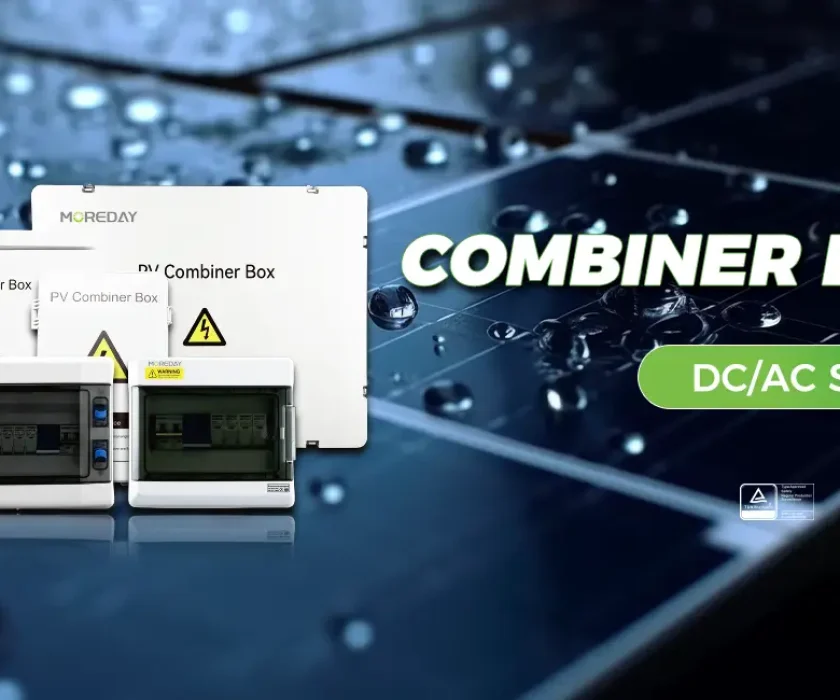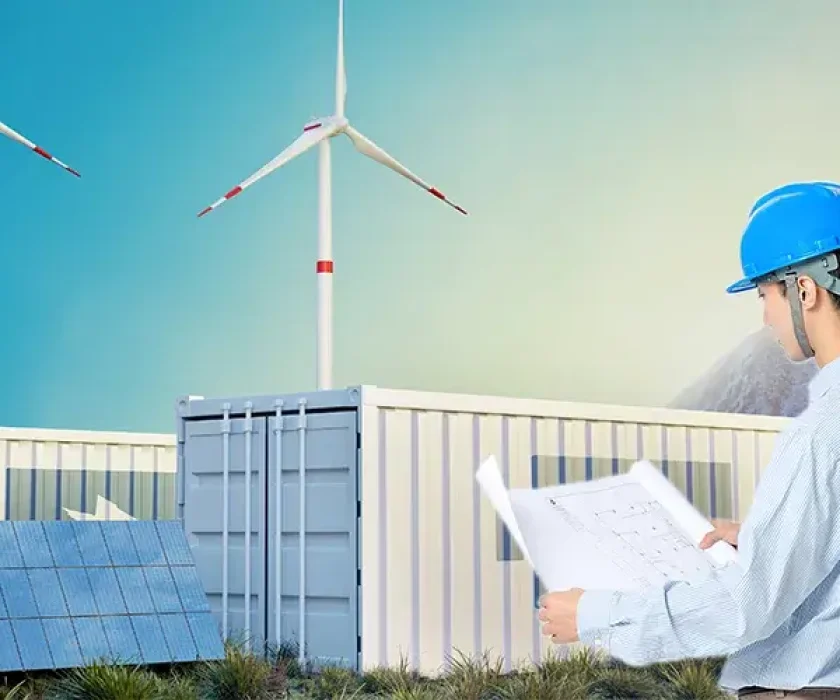Introduction
I
In today’s rapidly changing energy landscape, balancing the supply and demand of electricity has never been more crucial. As renewable energy sources like solar and wind become more widespread, the grid faces new challenges. Enter Demand Side Response (DSR) — a revolutionary approach that gives businesses the power to play an active role in energy management. But what exactly is DSR, and why does it matter? In this article, we’ll explore how DSR works, its key benefits, and how energy storage systems like those offered by MOREDAY are shaping its future.
What is Demand Side Response?
Demand Side Response (DSR), sometimes known as Demand Response or Demand Management, is a system that encourages businesses to adjust their energy usage in response to signals from the grid. It’s like an electricity traffic controller. When the grid is overwhelmed or under stress, DSR steps in and asks energy users to either reduce or shift their consumption. In return, they can earn financial rewards, help maintain grid stability, and support the transition to a more sustainable energy system.
Think of it as the grid calling on businesses during peak times — when everyone’s using power — and saying, “Can you ease up a bit to help us out?” Businesses that participate, especially those with large energy consumption or the ability to generate their own power, play a crucial role in keeping the lights on for everyone else. And in the process, they get a cut of the pie too!
The Mechanics of Demand Side Response
So, how exactly does DSR work? At its core, DSR is about flexibility. When the grid is strained, participants in a DSR program can adjust their electricity usage in a few ways:

1.Reducing Consumption: This might involve turning down non-essential equipment or adjusting heating and cooling systems. Factories might pause production, offices might dim lights, and retail outlets might tweak their air conditioning — all to reduce demand when the grid needs it most.
2.Switching to Onsite Generation: Businesses with their own power sources — like combined heat and power (CHP) plants, generators, or renewable energy systems (solar panels or wind turbines) — can temporarily switch off their reliance on the grid and use their own electricity.
3.Utilizing Battery Storage: This is where energy storage comes into play. Batteries, charged when electricity is plentiful and cheap, can be discharged during high-demand periods, providing power without drawing from the grid. Think of it like a savings account for electricity — businesses withdraw stored energy when it’s needed the most.
What’s great about DSR is that businesses have complete control. They can manually manage their participation, or use automated systems to respond instantly to grid signals. And with flexibility to choose the times they’re available, businesses can tailor their involvement to suit their operational needs.
Global Progress in Demand Side Response
DSR isn’t just a trend; it’s a global movement. Different regions are embracing DSR in unique ways, driving progress and innovation in the energy sector.
European Union: The EU has taken significant steps toward digitizing its energy system, with regulations that promote data access and integration of demand response into the grid. This connected network allows for more responsive energy management across countries.
United States: In 2021, the U.S. saw a potential savings of 29 GW from demand response programs, with millions of residential, commercial, and industrial users participating. That’s like taking 29 large power plants offline simply by adjusting demand!
Australia: South Australia has become a pioneer by mandating that air conditioners installed after 2023 must be DSR-ready, ensuring that everyday appliances can help support grid stability.
Each region is learning how to better manage energy in ways that suit their unique energy demands, but one thing is clear: DSR is becoming a vital part of energy management worldwide.
Types of Demand Side Response Services
Different types of DSR services cater to varying grid needs, ensuring the system stays balanced regardless of the situation.
1.Firm Frequency Response (FFR): FFR is like the emergency brake for the grid. It adjusts electricity usage in real-time to keep the grid’s frequency stable, reacting almost instantly to supply and demand changes.
2.Capacity Market: The capacity market focuses on ensuring there’s enough electricity during peak demand periods. Businesses get paid for being on standby, ready to reduce their energy consumption or provide electricity when the grid is under pressure.
3.Short-Term Operating Reserve (STOR): When something unexpected happens — like a power plant failure — STOR kicks in. Participants provide additional power or reduce demand at short notice to prevent blackouts.
4.Peak Charge Avoidance: This service is all about cost savings. Businesses reduce energy consumption during times of peak pricing, avoiding the highest tariffs and optimizing their energy bills.
Table: Key DSR Services Overview
| Service Name | Primary Function | Benefits to Business |
| Firm Frequency Response | Real-time grid stabilization | Immediate revenue for rapid response |
| Capacity Market | Ensures grid reliability during peak demand | Guaranteed payments for being on standby |
| Short-Term Operating Reserve | Provides backup power or demand reduction during emergencies | Quick payments for rapid demand reduction |
| Peak Charge Avoidance | Reduces consumption during high-price periods | Lowers energy costs by avoiding peak tariffs |
Benefits of Demand Side Response
Participating in DSR programs brings a wealth of benefits for businesses. Here are the top reasons why businesses should care about DSR:
Financial Gains: At the heart of DSR is the opportunity to make money. By reducing consumption during peak periods or providing energy from onsite generation, businesses can create new revenue streams. These payments come from the grid operator or energy supplier, making it a win-win for both sides.
Energy Savings: Shifting energy use to off-peak times doesn’t just support the grid, it also reduces a company’s overall energy bills. It’s like buying things on sale — why pay more when you don’t have to?
Grid Stability: By easing demand during critical times, DSR participants help prevent power outages and contribute to a more reliable electricity supply for everyone. It’s a community effort that strengthens the entire grid.
Operational Efficiency: Engaging in DSR often forces businesses to analyze and optimize their energy usage, leading to improved operational efficiency. The more businesses understand their energy consumption, the better they can streamline their processes and reduce waste.
Market Competitiveness: In a world that increasingly values sustainability, being part of a DSR program can enhance a business’s reputation. It shows commitment to innovative energy management, making the company stand out in a competitive market.
The Role of Energy Storage in DSR
Here’s where MOREDAY shines. Battery Energy Storage Systems (BESS) have revolutionized how businesses participate in DSR. Batteries allow for more flexibility and responsiveness, making them the perfect partner for DSR strategies.

Peak Shaving: Businesses can store energy during off-peak hours when electricity is cheaper, then use it during peak periods. This not only reduces their reliance on the grid but also cuts down energy costs.
Increased Grid Stability: Discharging stored energy during peak demand helps stabilize the grid, supporting the integration of renewable sources like solar and wind.
Fast Response: Batteries can respond to grid signals almost instantly, providing power exactly when it’s needed. This speed makes them an invaluable asset for DSR services like FFR.
With energy storage, businesses can maximize their participation in DSR and earn even greater financial rewards while contributing to grid resilience.
Future of Demand Side Response
The future of DSR looks bright, driven by technology and innovation. New developments like Vehicle-to-Grid (V2G) charging, which allows electric vehicles to return electricity to the grid, and Virtual Power Plants (VPPs) that digitally connect distributed energy resources, are pushing DSR forward.
As these technologies continue to evolve, DSR will expand to include more residential users and small businesses. We’re already seeing initiatives in countries like India and Japan that focus on residential DSR, using home energy storage systems to reduce peak demand.
DSR is not just for big players anymore. As energy markets adapt, participation opportunities will grow, making it accessible to a wider range of energy users.
Why Demand Side Response Matters for a Sustainable Future
In a world where renewable energy is becoming the new normal, DSR is a critical tool for ensuring that the grid remains stable and reliable. By encouraging businesses to use energy smarter, DSR supports the integration of clean energy and reduces our overall carbon footprint.
For MOREDAY, as a leader in energy storage technology, DSR presents an exciting opportunity. Our cutting-edge storage solutions are helping businesses across the globe participate in DSR programs, optimize their energy usage, and contribute to a more sustainable future. The journey toward a greener energy landscape is only just beginning, and MOREDAY is proud to be at the forefront.
Conclusion
Demand Side Response is no longer just an option — it’s a necessity. As businesses seek smarter ways to manage their energy usage, DSR provides a pathway to profitability, sustainability, and operational excellence. Whether it’s reducing energy consumption during peak times, using onsite generation, or leveraging energy storage, the benefits of DSR are clear. And with MOREDAY’s energy storage solutions, businesses can fully harness the power of DSR and be ready for whatever the grid throws at them.
FAQ`s.
Q1: What is Demand Side Response (DSR)?
A1:DSR is a system that allows businesses to reduce or shift their electricity usage in response to signals from the grid, helping balance supply and demand.
Q2: How does DSR benefit businesses?
A2: DSR provides financial incentives, helps reduce energy costs, supports grid stability, and improves operational efficiency.
Q3: Can small businesses participate in DSR?
A3: While traditionally large businesses have participated, DSR is expanding to include smaller businesses and even residential users in some markets.
Q4: What role does energy storage play in DSR?
A4: Energy storage systems like batteries enhance DSR by allowing businesses to store energy during off-peak times and use it during peak periods, providing greater flexibility and faster response times.
Q5: How does DSR support sustainability?
A5: By reducing reliance on the grid during peak times and integrating renewable energy sources, DSR helps lower carbon emissions and supports the transition to a more sustainable energy future.
Derek Ke
Hi, I’m Derek Ke, founder of Moreday.com, an expert in solar-protected electrical products and electric vehicle charging.
Over the past 15 years, we have helped nearly 500 customers (such as farms, residential, industrial, and commercial) in 60 countries solve new energy and green power problems. We aim to share more knowledge about solar power generation and new energy with everyone so that green electricity can enter thousands of households.








